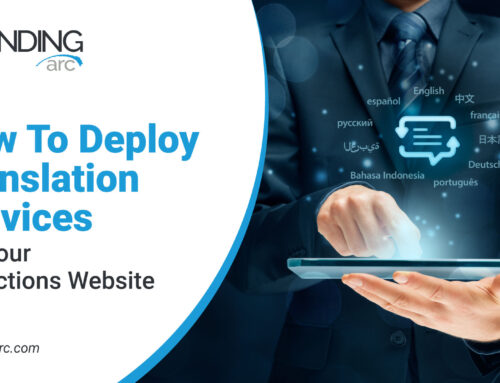The First 10 Steps for Creating a Startup Company

Creating a new startup company is not as complicated as it may seem. Forming a corporation or limited liability company to protect yourself from liability is almost always a smart move. It keeps your personal assets from being dragged into any problems that your business may face.
From our experience starting companies and working with a wide range of startups, we have developed a list of 10 tasks you need to at least consider when creating a new organization. Take careful note of the order we placed these tasks, if you do things out of order you will come across all kinds of unexpected problems.
1. Select a Name for your Startup
Before creating a startup business, take a few minutes and think carefully about the name you want to use. The name you select will be with you for a long time and it can be expensive to change the name down the road. You can file the corporation under one name and have additional “fictional names” that the business operates under, but I highly suggest picking one brand name and sticking to it.
2. Secure Domain Name
Once you have selected the name you want to operate under, you need to check for available domain names. I suggest starting off by searching your new company name on Google to see what comes up. How many other companies are using a similar name?
Go to GoDaddy.com and search for the domain name of your business. Try and acquire .COM domains as they are the most popular and many consumers will type .COM at the end of URL addresses, simply out of habit. Create a new GoDaddy account and purchase your domains under the company name.
3. File the Entity (Corporation or LLC)
Filing your corporation is done differently in each state. In Florida we go to www.sunbiz.org, search for the company name, select an entity type, pay the fee and get your articles of incorporation within a few hours. Now that you are ready to officially file your company it is time to decide what type of entity you are going to be. We normally suggest filing as a corporation or limited liability company because they enable you to do a “subchapter S” filing. You should consult with an attorney and/or accountant in your home area for detailed legal or financial advice. Subchapter S filings create pass-through taxation so that you don’t have to pay the standard double taxation of larger corporations.
4. Get EIN from the IRS
After you have filed your corporation, the next step is to file your startup with the IRS. An EIN or employer identification number is the equivalent of your businesses social security number and will be provided to you by the IRS.
You can get your EIN online in just a few minutes by visiting the IRS website at http://www.irs.gov/businesses/small/article/0,,id=102767,00.html. After filing this form with the IRS you can begin operating your new business under that company’s name. The EIN is going to be required to open your bank accounts, file applicable licenses and process payroll.
5. File Subchapter S Election (Form 2553)
Once you have filed your EIN number with the IRS it is a great idea to quickly file your form 2553 to have your new organization treated with single taxation. This filing will greatly benefit you come tax time and offers significant benefits to small businesses. To file the form 2553 you must meet certain criteria such as having less than 100 shareholders. For more information see the IRS website. You only have 90 days to choose the S election so it should be done when you set up the company so it is not overlooked.
Make sure you discuss your business with an accountant to ensure this is the best option for your business. Branding Arc is not an accountant and we suggest discussing all accounting issues with your accountant before taking any actions.
6. Open a Bank Account
When you are getting ready to head to the bank you need to make sure that you are bringing copies of all the documents you are going to need with you. Make sure to bring:
- Copy of Articles of Incorporation
- Employer Identification Number (EIN)
- Drivers License
Most startups begin by opening a business checking account and ordering a small amount of official checks. If your business will be making frequent deposits in the bank you should also consider getting the pre-printed deposit slips and the deposit stamp to save time on your trips to the bank.
7. Setup Payroll and W2 Yourself (Optional)
This is an optional step in the process, but I highly suggest it for people that are starting small businesses as their main source of income. By setting up a payroll (preferably through your bank) you can take taxes out of your income saving you a huge bill on April 15th. Payroll systems can be inexpensive through your bank, especially if you use direct deposit to your personal account at the same bank. When applying for a mortgage or other type of personal loan you will be able to show W2 income in addition to any disbursements or dividends you take from the organization.
8. Set Up Professional Email System
Having a professional email address goes a long way toward creating a positive first impression for your business. Companies that use @gmail, @aol or @yahoo email address for their business are viewed by their customers and vendors to be small and unorganized at first glance. Email addresses are inexpensive and since you already own the domain name, there is no reason not to.
Small businesses have many options for email hosting, but the one I recommend is Google Apps. Google Apps offers users most of the same features available to a Gmail user, but with a higher level of security and a professional email address @yourdomain. Google email accounts cost $5/ month or $50/year per user.
9. Design a Logo to Represent your Startup
Now that you have the foundation of your business in place it is time to start thinking about your organization’s identity. Creating a logo for a startup is a very important step with many different things to consider. Depending on what kind of startup you are creating you may use your logo for different things. Keep your logo design simple and remember to create both a “white” and “black” version of it to be used on different backgrounds.
Your logo is going to be the face of your company. Once you have created an option you think you love, take another day and see if you still love it in the morning. You are going to live with the logo for a long time, so make sure you love it before making a final decision.
10. Build a Website
Now that your small business is almost ready to go, it’s time to focus efforts on your website. A professional website is a very important marketing tool acting as the keystone for all your marketing and branding efforts. Your website gives your company a controlled online presence and allows you to market your company and sell your products and services 24/7.
A startup’s website is the keystone to their marketing and your team should spend some time to select a layout and design you really like. If you want a professional looking website, hire a professional to build it. If you find a good team to work with, your website can propel your startup to the next level.
Time to Start Moving and Make Things Happen
Once you have your infrastructure in place, it is time to start moving! Nothing in business happens by being idle and with all the resources you have already developed for your venture, the last piece of the puzzle is your effort. The more you put into your business the more you can get out of it in the long run so get out there and sell your products and services!










